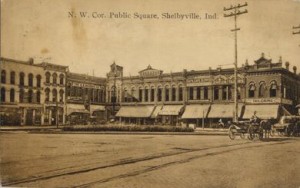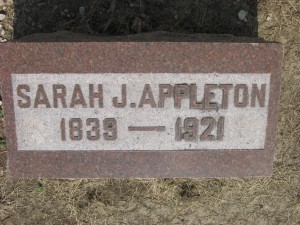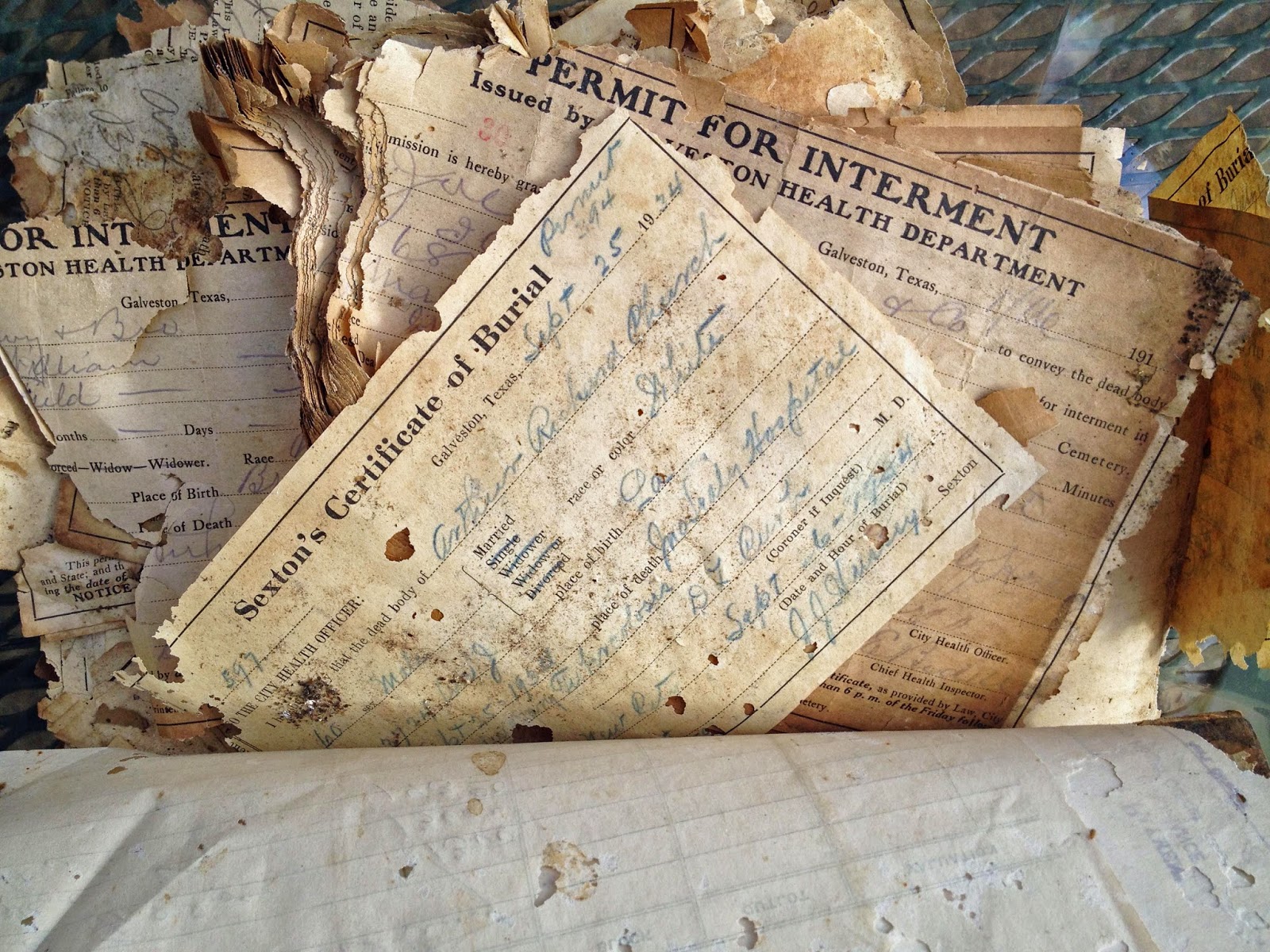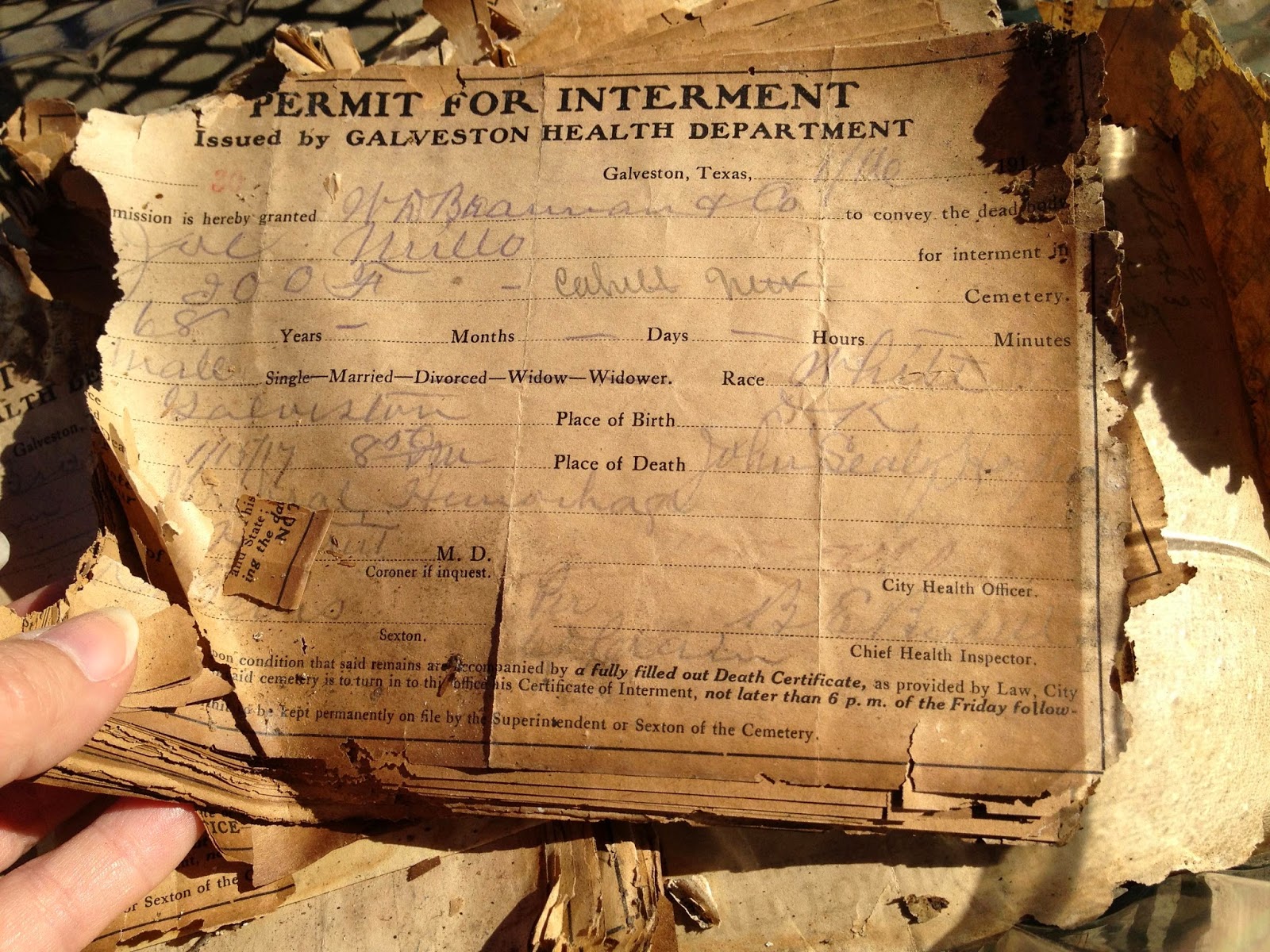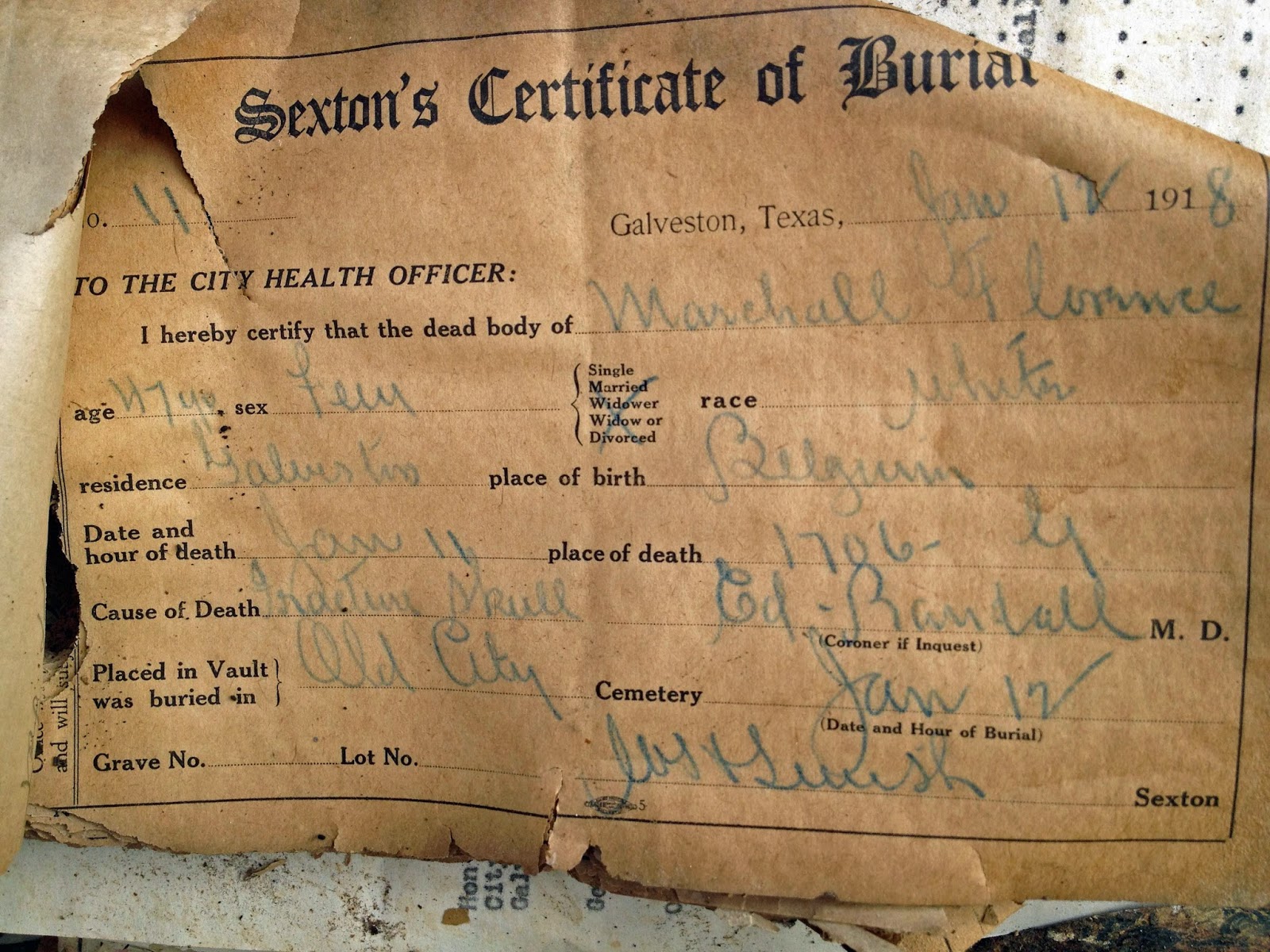Texas traditions can originate from almost anywhere in the world, thanks to our diverse history of immigration. It shouldn’t come as any surprise that some of Mexico’s customs have been brought north of the border. The most colorful, and thought by many to be mysterious, celebration is Dia de los Muertos.
This post contains affiliate links. Any purchases made through these links keep this blog running.

When I first approached a group of friends about having a Dia de los Muertos party, they were a bit hesitant. “Isn’t that kind of morbid?” “Isn’t that a celebration of death?”
The simple answer is no – it’s something much more upbeat than you may think.
Luckily, a few of them had seen the Disney Pixar movie “Coco” that familiarized American audiences with the celebration through a powerful story about family, community, tradition and remembrance. Think about Memorial Day, and the concept doesn’t seem so strange.
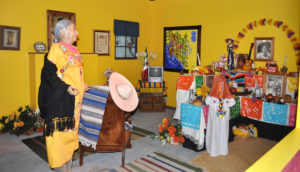
The gist is to celebrate the lives of our ancestors, rather than mourn their passing, by incorporating food, drink and activities they enjoyed in life. Family members create “altars” in their homes with photos of loved ones surrounded by offerings of food, flowers and mementos. Others visit family cemeteries to decorate ancestors’ graves and share stories about their lives. The days of the celebration surround the Catholic “All Souls Day” on November 2. (So it isn’t really a ‘Halloween thing” like many think.)
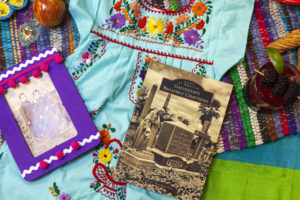
Many of us no longer live in the communities of our ancestors, so circles of friends tend to become our new families. That’s why I thought having our own Dia de los Muertos celebration together would be a fun chance to celebrate all of our families and have some fun and great food at the same time! (Plus, I have some talented friends, so we’re always up for a reason to celebrate together!)
You can easily put together your own party as well.
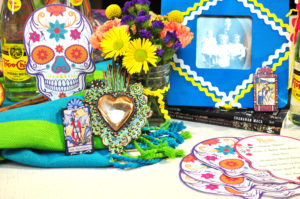 Be sure to incorporate photos of loved ones who’ve passed, and share their stories. It keeps their spirit and your family lore alive.
Be sure to incorporate photos of loved ones who’ve passed, and share their stories. It keeps their spirit and your family lore alive.
I not only included photos of my mother, who we lost last year to Alzheimers, but also made tissue paper flowers for decorations – a craft she taught me as a child.
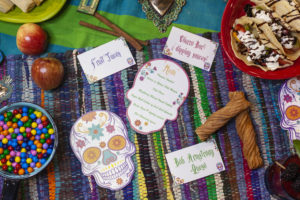
Attention to the smallest details can make a theme like this really come together. The talented Evangeline Event Designs made adorable sugar skull invitations and colorful menu cards, and I found some adorable small decorative accents, as well as a beautiful embroidered skull dishcloth at Hendley Market. The bright Fiestaware plates and platters are from Yesterday’s Best.

No Mexican theme meal is complete without tamales. We loved these from Pennie’s Tex Mex Takeout.
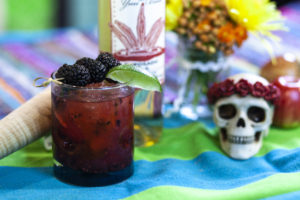
Alicia from The Kitchen Chick made chorizo with apricot sauce, Bob Armstrong queso (from the “Queso!” recipe book she carries in her store), and an amazing Blackberry Mezcal Smash Cocktail.
Our friend Stacy, otherwise known as the Hurried Hostess, made amazing fruit tacos and a churro bar. Yum-ola!
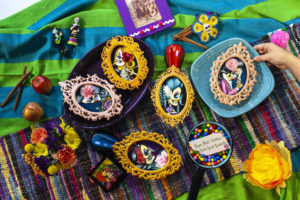
But the item that really had us all gasping in disbelief were the gorgeous cookies created by Jennifer from Good Gosh Ganache. I mean, really…look at these beauties!
Our friends Hailey and Tamara used their styling talents to help our buffet look amazing. Making this event such a group effort made it even more special.
Many communities in Texas offer the opportunity to experience Dia de los Muertos, including San Antonio, Corpus Christi, Victoria and Austin. Check your local community calendar to see if there’s one near you, and celebrate!

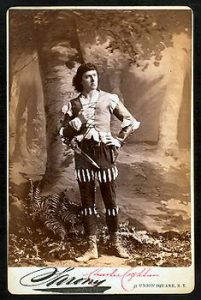

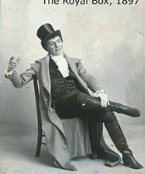 titled “The Royal Box.”
titled “The Royal Box.”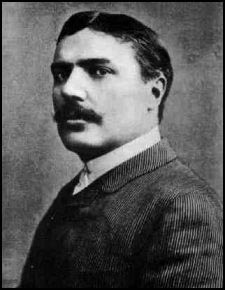 ing widow knew that her husband, upon his death, had wanted to be cremated and buried in New York. Galveston did not have a crematorium at the time, so she arranged for her husband’s body to be sh
ing widow knew that her husband, upon his death, had wanted to be cremated and buried in New York. Galveston did not have a crematorium at the time, so she arranged for her husband’s body to be sh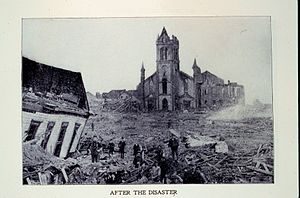
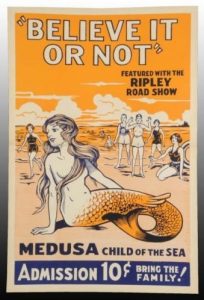 ed in Galveston. When the tragic flood came his coffin was washed out to sea and the Gulf Stream carried his around Florida and up the coast to Prince Edward Island – 2,000 miles distant – where he had lived.”
ed in Galveston. When the tragic flood came his coffin was washed out to sea and the Gulf Stream carried his around Florida and up the coast to Prince Edward Island – 2,000 miles distant – where he had lived.”
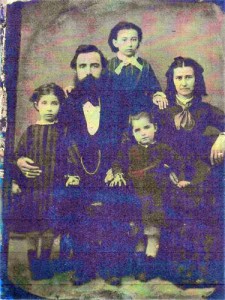

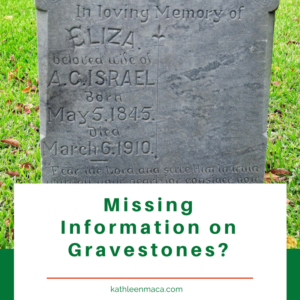
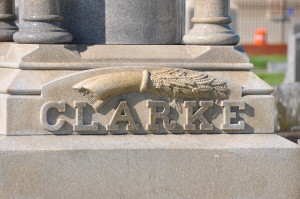
 ng holidays, we are surrounded by symbols of harvest and bounty. One of the most popular symbols of the season’s bounty is a sheaf of wheat, which is why it is often incorporated into decorations.
ng holidays, we are surrounded by symbols of harvest and bounty. One of the most popular symbols of the season’s bounty is a sheaf of wheat, which is why it is often incorporated into decorations.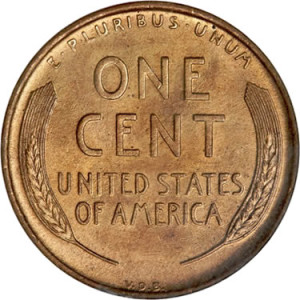 The image is so connected with bounty and prosperity that it was at one time used on United States currency.
The image is so connected with bounty and prosperity that it was at one time used on United States currency.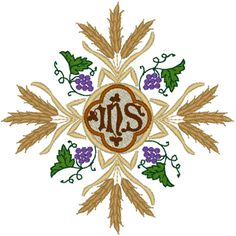 Eucharist, a motif of everlasting life through belief in Jesus. Therefore when wheat is used on gravestones or memento mori, it represents a divine harvest – being cut to resurrect the “harvest” into everlasting life or immortality.
Eucharist, a motif of everlasting life through belief in Jesus. Therefore when wheat is used on gravestones or memento mori, it represents a divine harvest – being cut to resurrect the “harvest” into everlasting life or immortality.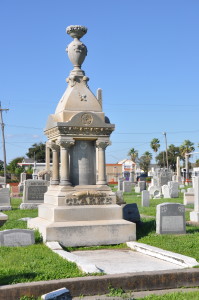 The wheat sheaf can also signify a long and fruitful life, often more than 70 years.
The wheat sheaf can also signify a long and fruitful life, often more than 70 years.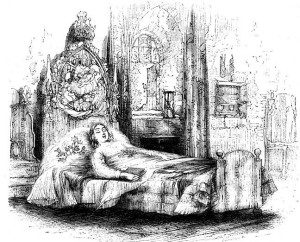 Folklore and customs concerning death and cemeteries can run from humorous to gruesome, and are almost always entertaining. Most of us have heard it’s bad luck to walk across a grave or speak ill of the dead, but if you didn’t know that collecting epitaphs could cause you to lose your memory perhaps you should read on…just in case!
Folklore and customs concerning death and cemeteries can run from humorous to gruesome, and are almost always entertaining. Most of us have heard it’s bad luck to walk across a grave or speak ill of the dead, but if you didn’t know that collecting epitaphs could cause you to lose your memory perhaps you should read on…just in case!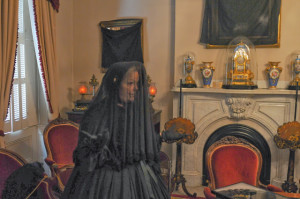
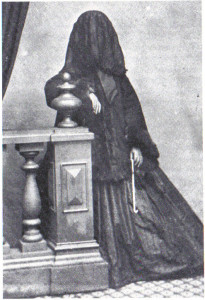
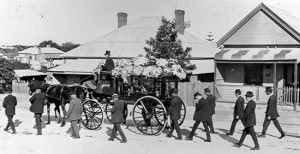
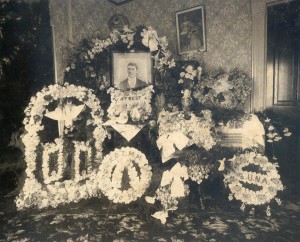
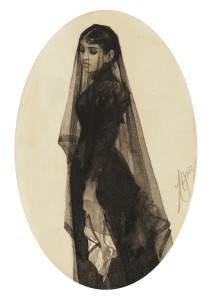
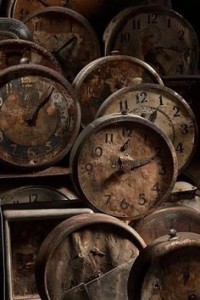

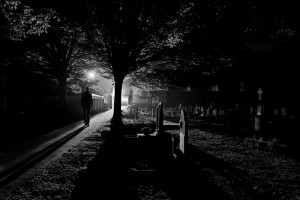


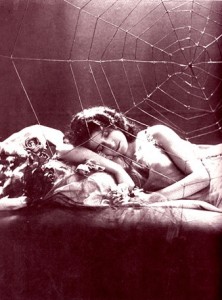
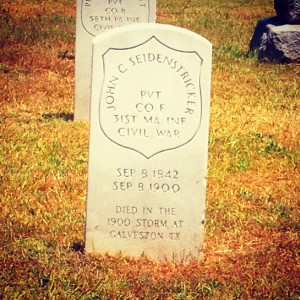
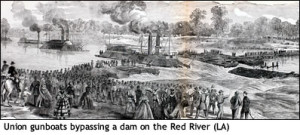 From there, Johann took part in the Red River campaign and was engaged with loss at Sabine Cross Road on April 4, 1864. He re-enlisted during the winter and left on July 21 for furlough in Massachusetts, returning to Donaldsonville in November.
From there, Johann took part in the Red River campaign and was engaged with loss at Sabine Cross Road on April 4, 1864. He re-enlisted during the winter and left on July 21 for furlough in Massachusetts, returning to Donaldsonville in November. While in New Orleans he met NOLA native Married Elenora Johanna Phillippi (1842-1906). They married on September 10, 1866 at St. Matthew’s Evangelical Church in Carrollton, Louisiana.
While in New Orleans he met NOLA native Married Elenora Johanna Phillippi (1842-1906). They married on September 10, 1866 at St. Matthew’s Evangelical Church in Carrollton, Louisiana.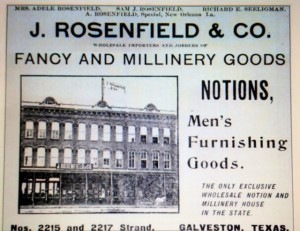
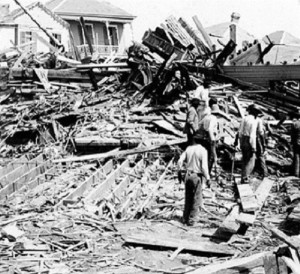 On September 8, 1900 a hurricane which is still the nation’s worst natural disaster struck the city, smashing buildings and killing thousands of people. John was one of those lost in the tragedy. It was the day after his birthday.
On September 8, 1900 a hurricane which is still the nation’s worst natural disaster struck the city, smashing buildings and killing thousands of people. John was one of those lost in the tragedy. It was the day after his birthday.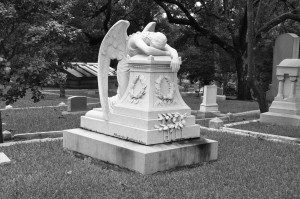
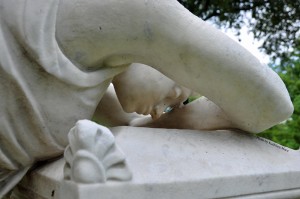 Glenwood’s angel is one of five of these mournful creatures that can be found in Texas.
Glenwood’s angel is one of five of these mournful creatures that can be found in Texas.
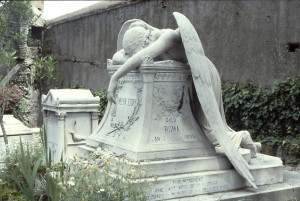 These five Texas angels, as well as others across the world, are based upon the “Angel of Grief,” a 1894 sculpture by William Wetmore Story. It serves as the grave marker of the artist and his wife at the Protestant Cemetery in Rome, Italy.
These five Texas angels, as well as others across the world, are based upon the “Angel of Grief,” a 1894 sculpture by William Wetmore Story. It serves as the grave marker of the artist and his wife at the Protestant Cemetery in Rome, Italy.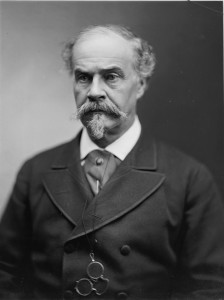
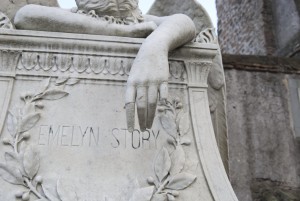
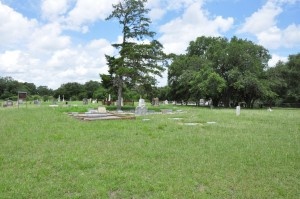
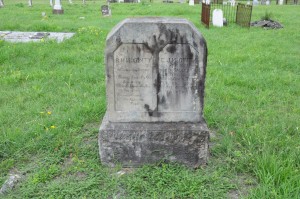
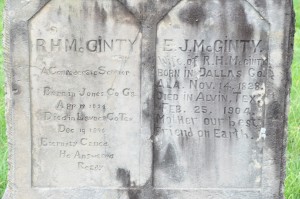 Robert Henry McGinty was born to Shadrach McGinty and Mary “Polly” Lamar McGinty on April 17, 1824 in Jones County, Georgia. Mary’s father James Lamar, according to family stories, was a first cousin to Mirabeau B. Lamar, the second president of the Republic of Texas.
Robert Henry McGinty was born to Shadrach McGinty and Mary “Polly” Lamar McGinty on April 17, 1824 in Jones County, Georgia. Mary’s father James Lamar, according to family stories, was a first cousin to Mirabeau B. Lamar, the second president of the Republic of Texas.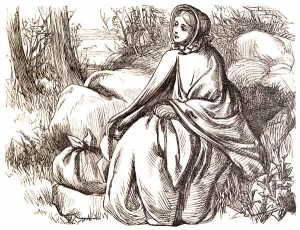

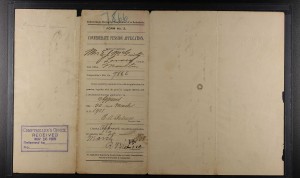

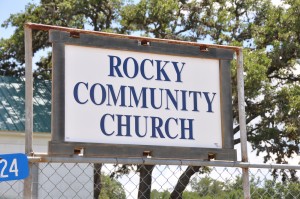 Rocky Community Church Cemetery, sometimes referred to as Rocky Creek Cemetery, in Johnson City, Blanco County, Texas. Unmarked graves make me incredibly sad, but those with only names are sad as well. When did this person live? Where is the family? Not even her first name was included.
Rocky Community Church Cemetery, sometimes referred to as Rocky Creek Cemetery, in Johnson City, Blanco County, Texas. Unmarked graves make me incredibly sad, but those with only names are sad as well. When did this person live? Where is the family? Not even her first name was included.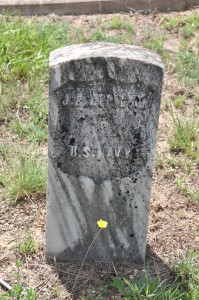 Sarah Jane Null was born On December 23, 1839 in Louisville, Kentucky. In 1859 she married James B. Appleton. James, whose middle initial is sometime listed as “R,” was born in Pennsylvania in 1830.
Sarah Jane Null was born On December 23, 1839 in Louisville, Kentucky. In 1859 she married James B. Appleton. James, whose middle initial is sometime listed as “R,” was born in Pennsylvania in 1830.